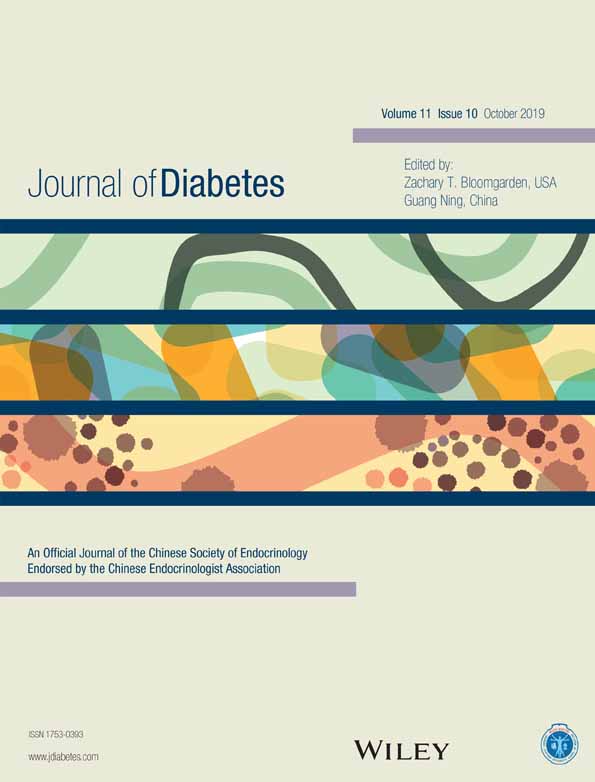Tapering decay of β-cell function in Chinese patients with autoimmune type 1 diabetes: A four-year prospective study
中国自身免疫1型糖尿病患者先快后慢的胰岛β细胞功能衰退特征:一项为期四年的前瞻性研究
Funding information National Key R&D Program of China, Grant/Award Number: 2017YFC1309604; National Science and Technology Infrastructure Program, Grant/Award Number: 2015BAI12B13; National Key R&D Program of China, Grant/Award Numbers: 2016YFC1305000, 2016YFC1305001
Abstract
enBackground
This study investigated the natural progression of β-cell function in Chinese autoimmune type 1 diabetic (T1D) patients and clarified factors possibly influencing the course of the disease.
Methods
The natural progression of β-cell function of 325 newly diagnosed Chinese autoimmune T1D patients was assessed by fasting and postprandial C-peptide (FCP and PCP, respectively) levels. β-Cell function failure was defined as FCP <50 pM and PCP <100 pM, whereas preserved β-cell function was defined as FCP >200 pM or PCP >400 pM. β-Cell function that did not meet these criteria was described as residual.
Results
At initial recruitment, 33.3% of patients had β-cell function failure, whereas 41.0% and 25.8% of patients had preserved or residual β-cell function, respectively. The percentage of patients who developed β-cell function failure during follow-up at 12, 24, 36, and 48 months after recruitment to the study was 55.8%, 75.6%, 86.7%, and 92.7%, respectively. Moreover, the slope of the β-cell function curve decreased over time, indicating that the pattern of its decline was non-linear and tapering. Seven percent of patients did not develop β-cell function failure within 4 years after diagnosis. Patients with lower initial FCP levels were more likely to develop β-cell function failure.
Conclusions
Chinese autoimmune T1D patients have considerable residual β-cell function at initial diagnosis, and the manner of progression of β-cell function failure is non-linear with a tapering decay rate. Furthermore, initial FCP levels may predict β-cell function failure in Chinese autoimmune T1D patients.
Abstract
zh摘要
背景
本研究探索了中国自身免疫1型糖尿病患者胰岛功能衰退模式,并寻找可能影响疾病进程的因素。
方法
入组325例初诊自身免疫1型糖尿病患者,随访观察其空腹C肽(FCP)和餐后C肽(PCP)的变化。FCP<50pmol/L且PCP<100pmol/L定义为β细胞功能衰竭,FCP>200pmol/L或PCP>400pmol/L定义为β细胞功能保留,FCP、PCP水平介于上述范围之间定义为β细胞功能残余。
结果
入组时,33%的患者β细胞功能衰竭,41%的患者β功能保留,25.8%的患者β细胞功能残余。入组后第12、24、36、48个月随访时,胰岛β细胞功能衰竭的患者比例分别达到55.8%、75.6%、86.7%和92.7%。β细胞功能随时间变化曲线呈现出非线性特征,其斜率随时间逐渐变小。入组后4年内随访时仍有约7%的患者β细胞功能未衰竭。入组FCP水平越低,患者在随访过程中越容易出现β细胞功能衰竭。
结论
中国自身免疫1型糖尿病患者初诊时胰岛β细胞功能尚可,诊后β细胞功能下降的速度呈现出非线性的先快后慢特征。初诊FCP水平可作为预测患者胰岛β细胞功能衰竭的指标。




